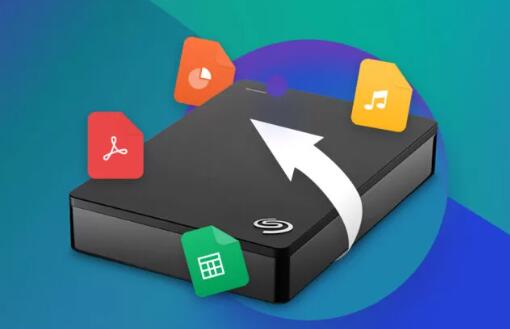Recovering data from a hard disk that isn’t being detected can be a complex process, but there are several methods you can try, depending on the underlying issue. Below is a comprehensive guide that outlines various troubleshooting steps, recovery methods, and tips to maximize your chances of successful data recovery.
Before diving into recovery methods, it’s important to understand why a hard disk might not be detected. Common reasons include:
Physical Damage: Mechanical failures or damage due to drops, water, or electrical surges.
Logical Failures: Corruption of the file system or partition table.
Connection Issues: Faulty cables, ports, or power supply.
Driver Issues: Missing or corrupt drivers on your computer.
BIOS/UEFI Settings: Incorrect settings preventing detection.
Initial Troubleshooting Steps
Check Physical Connections:
Cables: Ensure that the data and power cables are securely connected. Try using different cables to rule out a faulty one.

Ports: Connect the hard disk to a different USB port or try it on another computer.
Listen for Unusual Sounds:
If the hard disk is making clicking or grinding noises, it may be experiencing mechanical failure. Avoid using it further to prevent additional damage.
Check Disk Management (Windows):
Right-click on “This PC” > “Manage” > “Disk Management”. Look for your hard disk. It may not be assigned a drive letter or may be marked as unallocated.
Check System Preferences (Mac):
Open “Disk Utility” and see if the drive appears there. If it’s grayed out, it might need to be mounted.
Recovery Methods
1. Using Built-In Tools
Windows:
Use the “CHKDSK” command:
Open Command Prompt as an administrator.
Type chkdsk X: /f (replace X with your drive letter).
Press Enter and allow the scan to complete.
Mac:
Use “First Aid” in Disk Utility to repair the disk.
2. Third-Party Data Recovery Software
Panda Assistant is a powerful data recovery software designed to help users recover lost or deleted files from various storage devices, including external hard drives, USB drives, and memory cards. With its user-friendly interface, Panda Assistant makes the recovery process accessible for both beginners and advanced users. The software employs advanced scanning algorithms to search for recoverable files, ensuring a thorough recovery process.
Key features of Panda Assistant include a quick scan for recently deleted files and a deep scan for more complex recovery scenarios. Users can preview recoverable files before restoring them, allowing for a more targeted recovery. The software supports a wide range of file formats, including documents, images, videos, and more.
Panda Assistant prioritizes data integrity and security, ensuring that recovered files are restored without any alteration. Additionally, it offers an easy-to-follow step-by-step guide to assist users throughout the recovery process. The software is compatible with both Windows and macOS, making it a versatile tool for different operating systems.
For those who need assistance, Panda Assistant provides customer support to help resolve any issues during the recovery process. Regular updates ensure that the software remains effective against new data loss scenarios.
3. Advanced Recovery Options
If software methods fail, you may need to consider more advanced options:
Live CD/USB Recovery:
Use a Linux Live CD/USB (e.g., Ubuntu) to boot your computer. This can sometimes detect drives that Windows cannot. You can access the drive and copy files to another external storage.
Disk Imaging:
If the drive is failing but still partially accessible, create a disk image using software like ddrescue or Clonezilla. Work on the image instead of the physical drive to prevent further damage.
4. Professional Data Recovery Services
If none of the above methods work and the data is critical, consider professional data recovery services. These services can handle severe physical and logical issues but can be expensive.
Choose a Reputable Service:
Research reviews and ensure the service has a good track record in data recovery.
What to Expect:
They will often perform an initial evaluation to determine the extent of the damage and provide a quote before proceeding.
Preventive Measures
To minimize the risk of future data loss, consider the following:
Regular Backups:
Use automated backup solutions (like cloud storage or external drives) to keep your data safe.
Safe Handling:
Handle your hardware with care, and avoid exposing it to extreme conditions.
Disk Health Monitoring:
Use tools like CrystalDiskInfo to monitor your hard disk’s health and be alerted to potential issues.
Recovering data from a hard disk that isn’t being detected can be a challenging process, but by following these steps, you can maximize your chances of success. Start with basic troubleshooting, move to software solutions, and consider professional help if necessary. Always prioritize preventive measures to safeguard your data in the future.
About us and this blog
Panda Assistant is built on the latest data recovery algorithms, ensuring that no file is too damaged, too lost, or too corrupted to be recovered.
Request a free quote
We believe that data recovery shouldn’t be a daunting task. That’s why we’ve designed Panda Assistant to be as easy to use as it is powerful. With a few clicks, you can initiate a scan, preview recoverable files, and restore your data all within a matter of minutes.
Subscribe to our newsletter!
More from our blog
See all postsRecent Posts
- Data recovery salt lake city utah 2025-04-18
- Data recovery sacramento 2025-04-18
- Data recovery miami 2025-04-18

 Try lt Free
Try lt Free Recovery success rate of up to
Recovery success rate of up to









